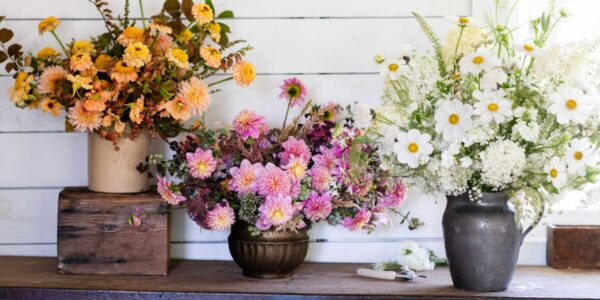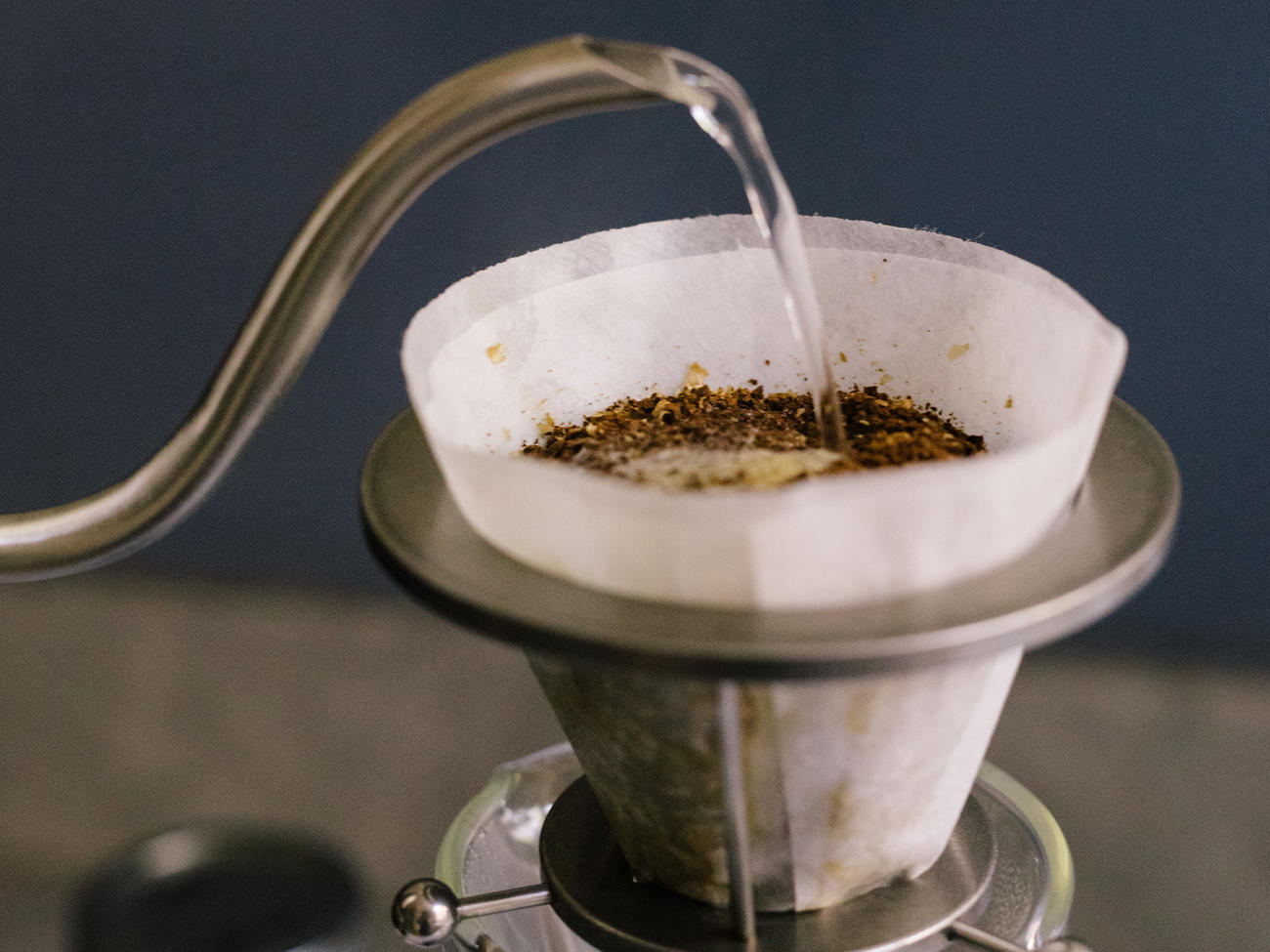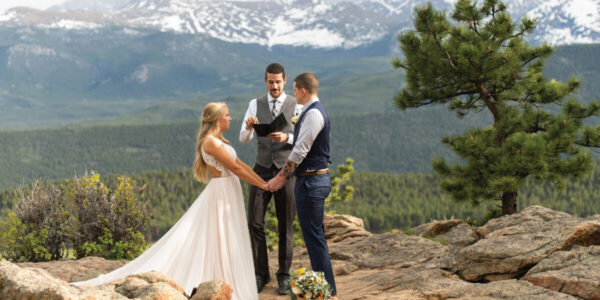
How to Step up Your Pour-Over Coffee Game
Pro tips for mastering the perfect cup of coffee at home

So maybe you’re bored with your morning coffee routine, sick of office coffee sludge, or guilty of spending $6 a day on designer coffee-shop concoctions. Enter the pour-over: an elegant way to craft a single cup (or several) at home, and add a brief moment of reflective pause to your hectic morning scramble. To give us the lowdown on mastering the pour-over, we tapped San Francisco-based Buffy Maguire, a longtime coffeeshop owner and founder of Lady Falcon Coffee Club, a line of craft-roasted beans and mobile coffee bar that operates out of a vintage 1948 truck.
“In my 20s, I would hustle in the early morning, hair wet, to the café to open up. I’d dial in the espresso and down shots first thing,” she says. “Then I opened more cafés, began roasting coffee, leading a team, and became the mother of young sons. Somewhere along the way, my personal coffee consumption became more considered. Now, I treat my morning pour-over as a sensory moving meditation. Consequently, I get up early to carve a bit of time out, but I look forward to the ritual—its delicacy and precision—every morning.”
Below she shares her steps for making a delicious morning cup, along with the essentials every home barista should have on hand.Start with Fresh-Roasted
“Using fresh-roasted beans (preferably from Lady Falcon Coffee Club!) is the most important thing you can do. And while I believe that the ‘best’ type of coffee to use is simply your personal favorite, pour-overs tend to favor medium-light to medium roasts.”Grind the Morning Of
“I’m really not into the whole snobby coffee movement. It doesn’t necessarily create better-tasting coffee, and can alienate people from accessing great coffee. But there is one thing I am pretty persnickety about, and it’s only using fresh beans and grinding them immediately before use! Grind your coffee to the texture of small grains of sand to allow the most flavor of the bean to be unlocked.”Measure It Out
“Personally, I prefer a dense cup of coffee—not tea-like—so I dose my coffee on the high side: 35 grams for one cup. This is a bit extravagant; you can get a similar effect with anything over 30 grams, which is about three heaping tablespoons of ground. But I like it strong!”Get Your Water to the Proper Temperature
“I highly recommend using an electric swan-neck kettle to heat your water (and purified water is best). The swan neck allows for a consistent, slow stream of hot water and having it be electric is just so convenient. After your water boils, let it cool down for a minute or so. I use this time to pour some of the boiled water into my favorite mug, letting it sit there in there for a bit to heat it.”Rinse the Filter
“You should definitely rinse off the paper filter before adding coffee. Without this step, the starch in the paper becomes a dominant taste.”Slowly Pour in Your Water
“First, gently wet the coffee to wake it up—in our coffee world, this is called a ‘bloom.’ This is a great time to smell the coffee and get to know it. When I am deciding about a new bean or roast, I spend a lot of time smelling the coffee at this stage. After the bloom, imagine you are watering a delicate plant. Starting in the center of the grounds, pour water in concentric circles, avoiding the edges. Most coffee ‘pros’ time this step at around 3-and-a-half minutes, a little longer than you’d probably prefer, but once you build the muscle memory, this step becomes meditative.”And Finally—Enjoy!
“Personally, I like as little milk as possible, but will use a tiny amount of cream when drinking for pure pleasure.”Must-Have Items for the Perfect Pour-Over
- Storage Containers “I store my coffee in sealed mason jars and recycled jam jars with little handwritten notes because part of my job is constantly tasting and experimenting. While this is definitely not for everyone, I’d highly suggest storing your coffee in an airtight container. And glass is easy to clean. Also, coffee doesn’t need to be refrigerated or frozen—any cupboard out of sunlight is ideal.”
- Grinder “Burr grinders are best. For home use, a Baratza conical burr provides lots of nuances to dial in your coffee; they have entry-level grinders that are not too pricey. But you can easily pick up a cheap blade grinder and still get a much better cup than by buying pre-ground.”
- Scale “A basic kitchen scale will totally do the trick for weighing your coffee and water. If you’re looking for next-level, I have a few really great coffee scales—the Hario V60 Drip Scale, Jennings’ CJ4000, and the super high-tech Acaia Lunar. The Hario and CJ4000 work great and are very simple. The Acaia is kind of amazing, but definitely for the more graduated pour-over home barista and not necessary for everyone.”
- Electric Swan-Neck Kettle “Right now I’m using a BonaVita, but I find that most kettles on Amazon are great quality and I don’t really have a preference as long as it is sturdy. Some swan necks have temperature gauges, which is fun but in my experience those thermometers break pretty quickly.”
- Brewer “I am really enjoying Saint Anthony Industries’ Phoenix 70 pour-over method. I met the team a few years back when they were first starting out, and they really are craftsmen with superior products—considered as well as beautiful. I also have a glass-blown pitcher from them that connects to the dripper. The Melitta and Hario V60’s Ceramic Dripper are also solid options.”
- Mugs “I like a solid, weighty mug that retains the heat of the coffee. My favorites are always ceramic mugs made by local artists. I love Georgia Hodges’ mugs right now, but Larry Letofsky’s mugs have hosted many an amazing cup of coffee for me. My neighborhood, the Outer Sunset, is home to some amazing ceramicists. I regularly stop by their home workshops—often in their garage—to chitchat and pick up a mug for family, friends, or myself. You can also purchase at the Outer Sunset’s General Store or Establish shops.”
